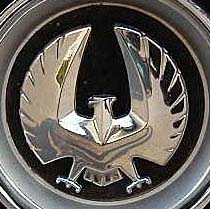Each of the John River books utilizes various Martial Arts fighting techniques. This section provides a summary of the techniques used.
Kicking Techniques (Keri-waza)
- Ashi Barai: Foot sweep
- Fumikomi Geri: Stomp kick
- Hiza Geri: Knee strike
- Kin Geri: Kick in the groin, performed like front kick but with the feet
- Mae-Ashi Mae Geri, a.k.a Choku Geri: Front kick with front leg
- Mae-Ashi Mawashi Geri: Front roundhouse kick with front leg
- Mae Geri: Front kick
- Mae Hiza Geri: Front knee kick
- Mae-Ren Geri: Double front kick (i.e. double mae geri)
- Mae Tobi Geri: Front flying kick
- Mawashi Geri: Roundhouse kick
- Mawashi Hiza Geri: Circular knee kick
- Mikazuki Geri: Crescent kick
- Nidan Tobi Geri: Double jump front kick
- Tobi Geri: Jump kick
- Tobi Hiza Geri: Jumping knee kick
- Tobi ushiro Mawashi Geri: Jumping reverse roundhouse kick
- Ura Mawashi Geri: Upper inside roundhouse kick, a.k.a. hook kick
- Ushiro Geri: Back kick
- Ushiro Mawashi Geri : Reverse roundhouse kick
- Ushiro Kekomi: Back side thrust kick
- Otoshi Mawashi Geri: Circular falling kick
- Yoko Geri Keage: Side snap kick
- Yoko Geri Kekomi: Side thrust kick
- Yoko Tobi Geri: Jumping side kick
Karate – Hiza Geri (or Knee Strike)
This Karate technique is known as Hiza Geri. Hiza is the Japanese word for a knee strike, or, more literally, knee (hiza) kick (Geri).
A knee strike is often used for close-in fighting where a martial artist can not fully extend their legs (i.e. unable to launch a roundhouse kick due to the close proximity of the opponent), grappling situations where arms are trapped or restricted, etc. Targets for knee strikes include an opponent’s ribs, thighs, chin/face (if the head is pulled down during grappling), etc.
Karate – Mae Tobi Geri (or Jumping Front Kick)
This Karate kick is also called a flying front kick (when you get a bit of run before executing the kick).
In contrast to a basic Mae Geri (front kick) which can be used to kick an opponent in the groin, the Mae Tobi Geri can be used to kick an opponent in the chin.
Palm Strike
A strike using the palm of the hand. Whether the hand is open or the fingertips are folded against the bottom knuckles, palm strikes hit with the bottom part of the palm, where the hand meets the wrist. The hand is held perpendicular to the wrist to avoid hitting the softer inner wrist tissue against the target.
The bottom ridge of the palm is a surprisingly solid striking surface and can do just as much damage as a closed fist when utilized properly (some studies have shown that a palm strike actually can produce more energy than a punch)[citation needed], with far less risk of injury to the striker’s own hand.
The palm strike is useful as it is thrown in a more relaxed manner than a clenched fist. This is because clenching the fist shortens the wrist’s extensor muscles, which counter the flexor muscles of the wrist used in punching. Many martial arts teach to keep the fist clenched and relaxed until impact to maximize the punch’s speed.
The targets are numerous, and some examples include the nose, jaw, ears, back of the head, the groin, the kidneys, the temples, and the abdominal cavity. Some combat sports, such as Pancrase, have forbidden strikes using the clenched fist but permitted strikes using the palm.
Elbow Strike
An elbow strike (commonly referred to as simply an “elbow”) is a strike with the point of the elbow, the part of the forearm nearest to the elbow, or the part of the upper arm nearest to the elbow. Elbows can be thrown sideways, similarly to a hook, upwards, similar to an uppercut, downwards with the point of the elbow, diagonally or in direct movement, and in several other ways, like during a jump, etc.
Elbowing is a disallowed practice in most combat sports. However, Lethwei, Muay Thai, Pradal Serey, and several mixed martial arts (MMA) organizations do allow elbowing or elbowing in a specific manner. Mixed martial arts organizations disallow it usually because elbowing the head increases the risk of lacerations in a fight.
While elbows are mostly disallowed in most modern combat sports, they are common in traditional martial arts. There are few traditional martial arts that don’t use elbows, though it depends on which martial art it is, if the elbows are primary or secondary weapons, and also in which manner, what tactics, and how often they are used. Some well-known and respected traditional martial arts that use elbows are Karate, Taekwondo, Hung Ga, Bajiquan, Wing Chun, Silat, Lethwei, and Muay Boran.
In Muay Thai, elbow strikes are often used at close range but are employed while jumping toward the opponent, similar to Muay Thai’s flying knee. The hardness of the elbow allows for hitting with considerable force, and experienced fighters can easily knock out, cut, or injure their opponent with a well-placed strike. Elbows are generally most effective when used in combination with punches or kicks to allow the fighter to close the distance.
Elbows are also used in mixed martial arts as part of the ground-and-pound fighting tactic. Participants often use elbow strikes in conjunction with punches while in the full guard, half guard, side mount, or full mount in order to knock out or overwhelm the opponent.
How to escape a rear choke hold
Banned Fighting Techniques

